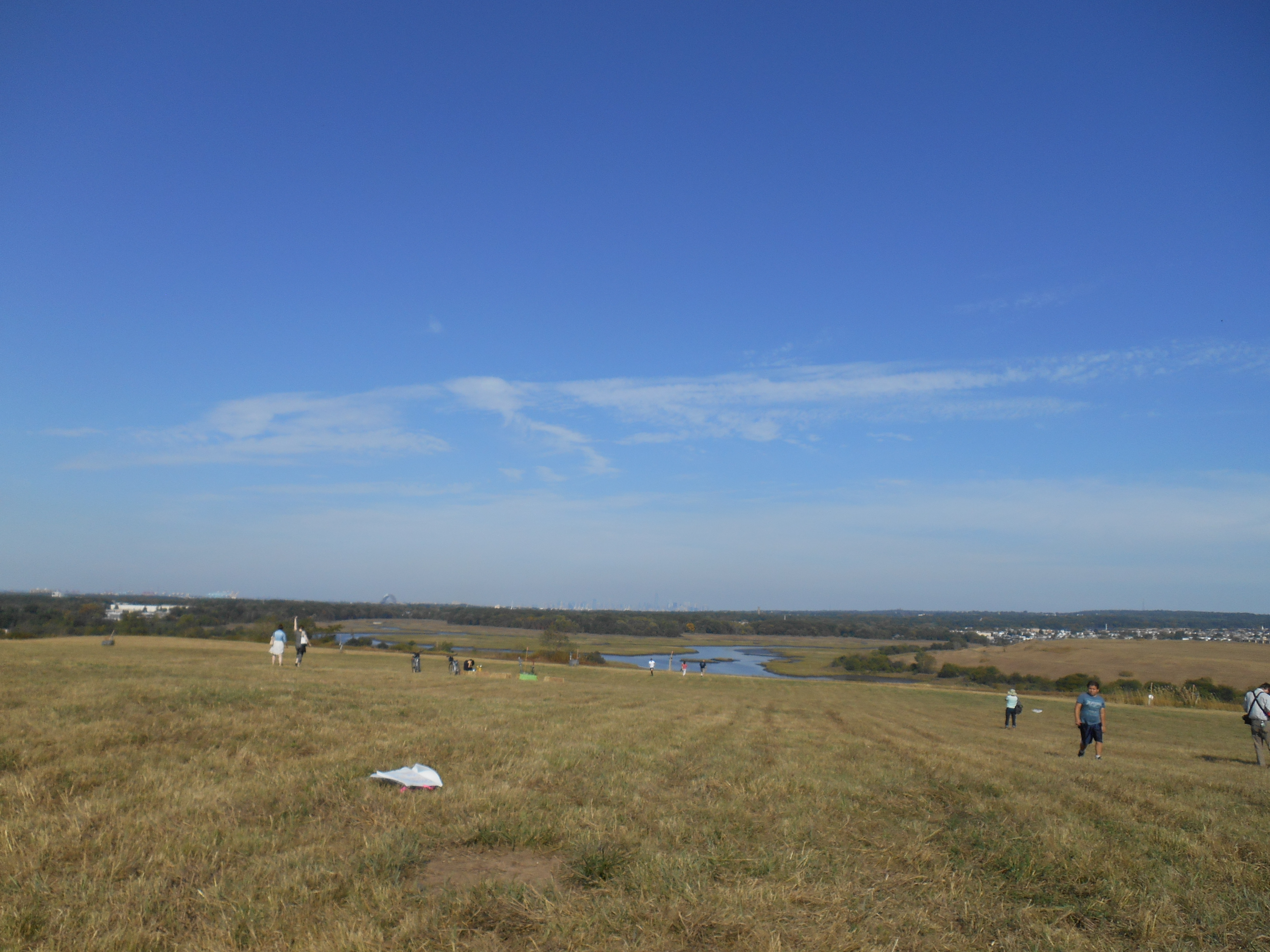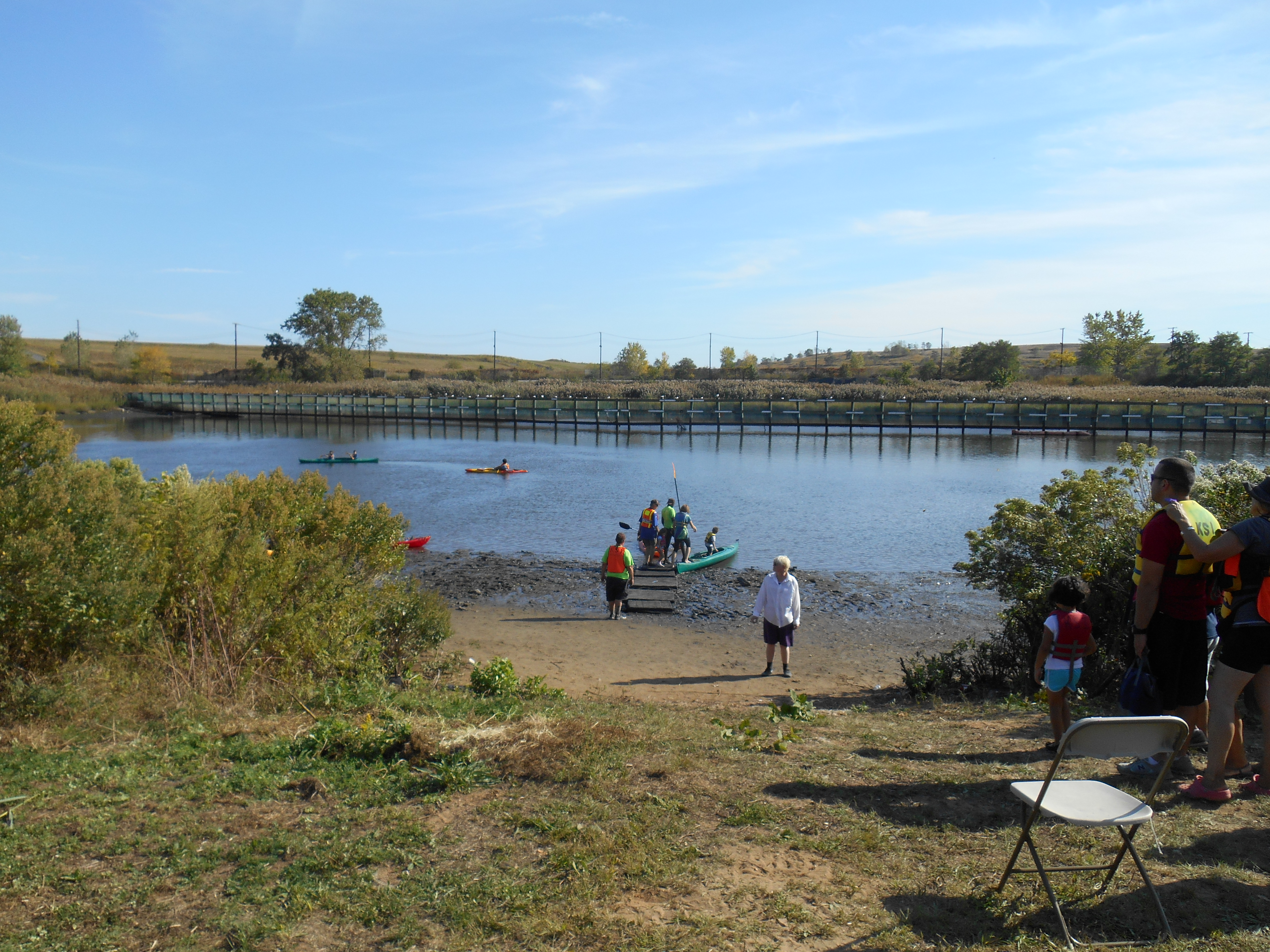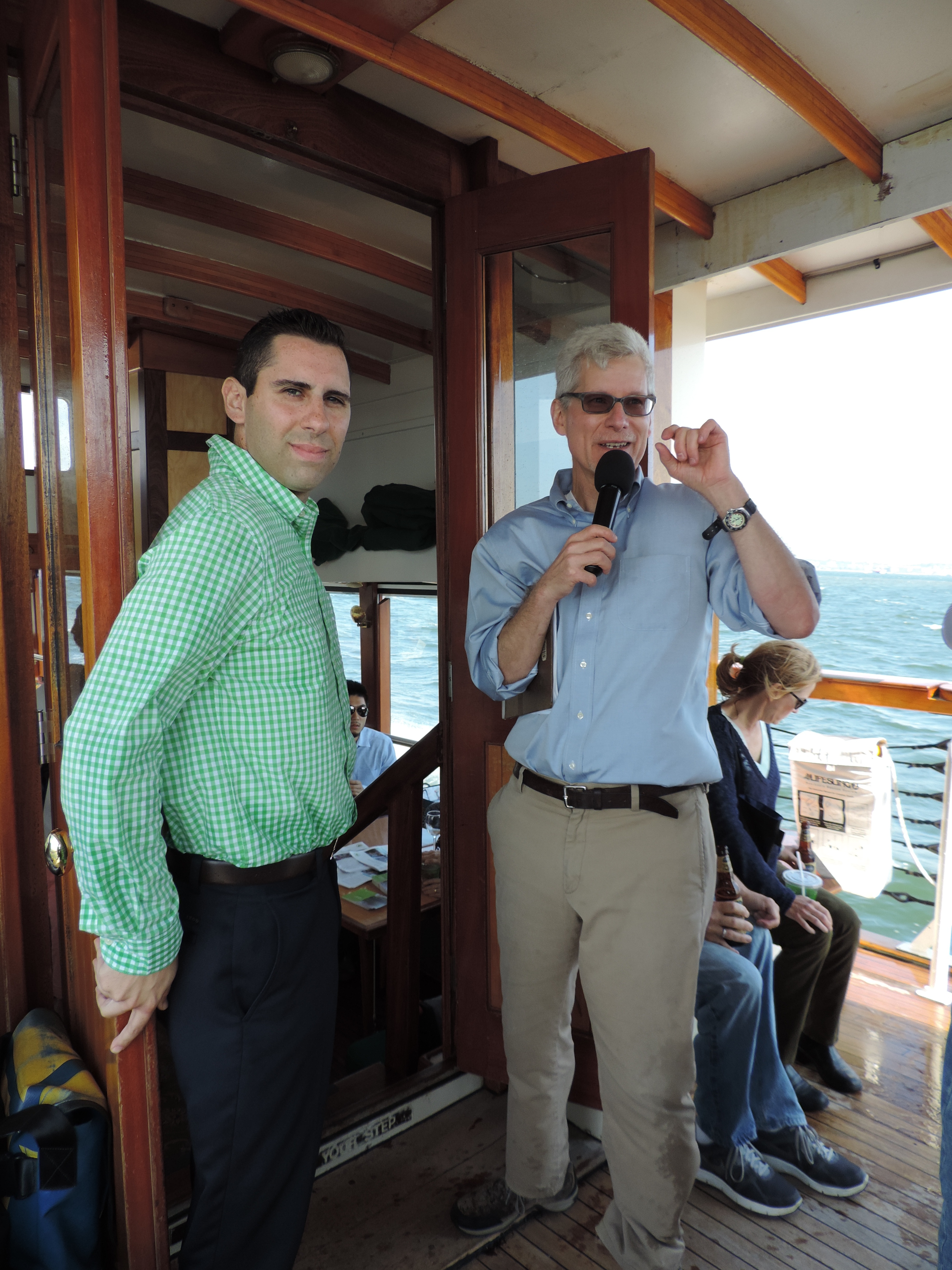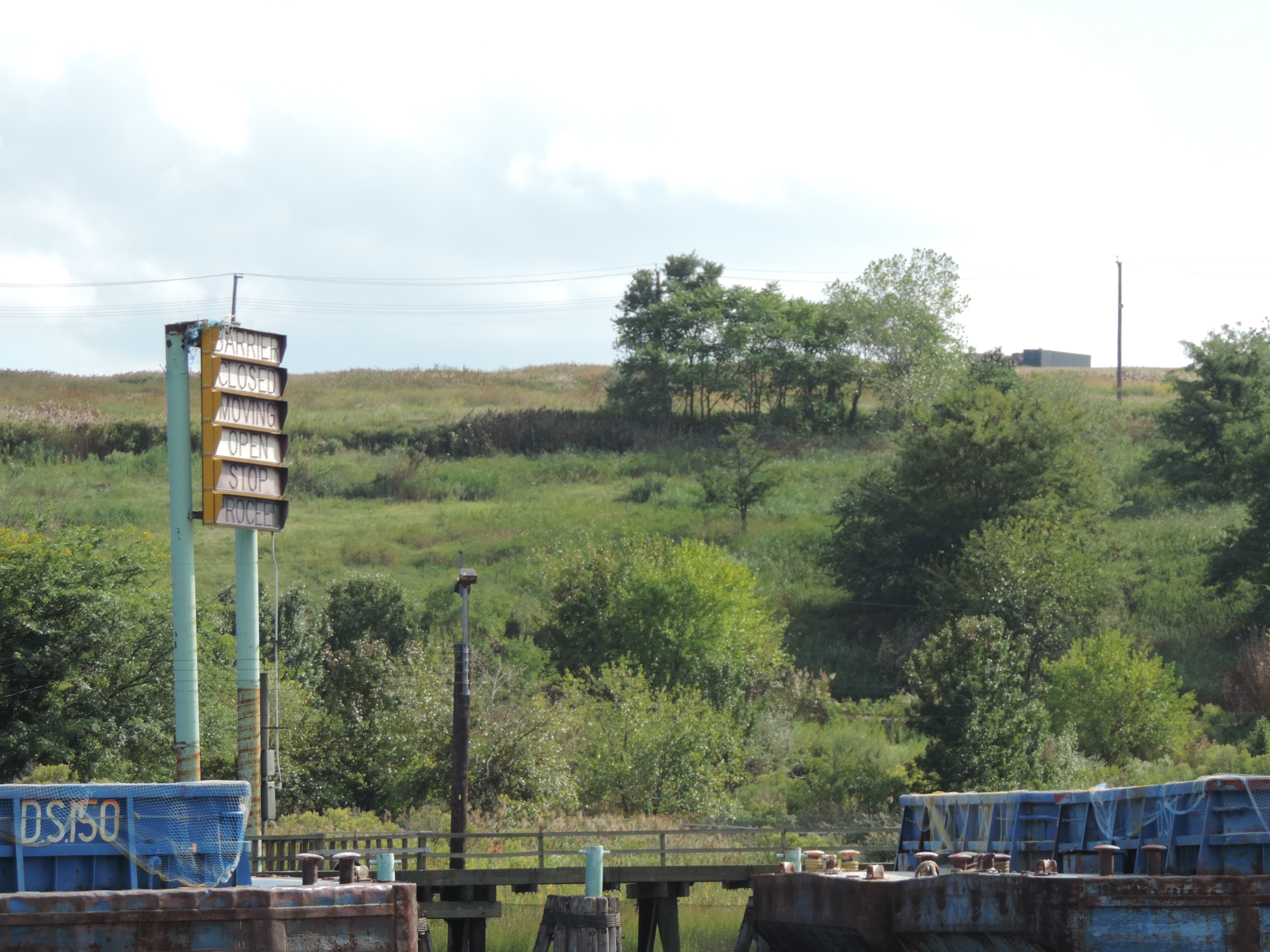by: Julia Adams
It’s a time of investment in Staten Island. The borough is currently undergoing two major projects. To capitalize on the passage of 22 million people and two million tourists a year through St. George Ferry terminal, the city is developing Staten Island’s North Shore waterfront with an impressive outlet mall, a residential and hotel complex, a new waterfront park in Stapleton, and the largest observation wheel in the world, twice the size of the London Eye – 630 feet, or 60 stories high, with up to 1,400 people per ride, and 40 people per capsule. With the prospect of creating over 1,000 jobs, the city anticipates that the plan will stimulate the local economy as well as function as a social center for the borough’s residents. The North Shore will receive $1 billion in private investment, the largest development in Staten Island since the 1964 Verrazano Narrows Bridge.
The observation wheel may supersede what had been the icon of Staten Island in the second half of 20th century: the Freshkills landfill. Towards the center of the island, the NYC Sanitation (DSNY) and Parks Departments have been at work transforming what was once the largest landfill in the world into a thriving, 2,200-acre public park. Unlike the St. George development plan, Freshkills Park is intended for local residents. Its restoration is an attempt to compensate for 57 years of trashing the community and to reverse decades of environmental and psychological damage incurred by the landfill.
On 09.18.14, the AIANY Architecture Tour Committee and Classic Harbor Line organized a Featured Boat Guide tour down the Hudson River and Arthur Kill into Freshkills Creek. Arthur Platt, AIA, of the AIANY Architecture Tour Committee, Steven Grillo of the Staten Island Economic Development Corporation, and Michael Callery of the NYC Department of Parks and Recreation, guided us through the history, current state, and design of the park and surrounding area. As we headed out, Platt reminded the passengers that New York has undergone unthinkable transformation from its wild origins in the last 400 years. As Eric Sanderson, who led an AIANY boat tour in mid-September, illustrates in Mannahatta, New York was once an Eden – lush, diverse, and abundant. The water we were sailing through once had more than 100 fish species in its waters, with oysters of myriad shapes and sizes.
Freshkills Park is far from the first time the city has built on landfill. All of Battery Park City and one-third of downtown Manhattan from 14th Street are built on top of fill. In fact, the Freshkills landfill first opened to turn the shore’s marshland into land with development potential. Robert Moses decided to fill the marshland, previously at a negative 10-degree elevation, in order to build Route 440. As Callery described, Moses’s vision was to split the land with a highway, with industry on one side and residences on the other. Originally, the Freshkills landfill was a three-year plan, which was continuously extended until it was in operation for 53 years, from 1948 to 2001. When Freshkills opened, it was one of a number of landfills in New York, but when the state changed environmental and landfill codes, Freshkills was the only landfill to adapt to the expensive retrofits demanded by new regulations. In 1986-1987, at its peak operation, Freshkills accepted 29,000 tons of trash a day. When the fill closed in March 2002 (and again, after it was temporarily reopened for 9/11 refuse), it was estimated that 150 million tons of garbage sat on the site.
How do you build on 150 million tons of garbage? The top of the landfill is covered by a solid plastic cover. On top of that are five layers: a soil barrier, a gas vent made of rocks, a drainage layer, two feet of barrier protection material, and at least six inches of dirt. Underneath, as millions of tons of garbage are decomposing, the mounds compress, reaching up to 900 degrees, and releasing toxic liquids and gases. The most toxic of these, carbon dioxide, methane, and nitrogen, are captured by the gas ventilation system connected to 900 landfill gas-well heads sprinkled throughout the park. According to Callery, the city collected $10 million in methane sales from the site last year alone. The park will not open until garbage decomposition is complete, gas production stops, and leachate drains from the site, a process of approximately 30 years.
Methane harvested from the site is used by the National Grid to heat an estimated 22,000 homes, one of the many green features of James Corner Field Operations’ design. of the firm won the 2001 Fresh Kills Design Competition held by the Municipal Art Society and the NYC Department of City Planning (and is landscape architecture firm behind the High Line). Its design stood out because of its incorporation of sustainable energy uses in the park, including solar panels (the largest solar installation in the city), geothermal heating and cooling, plans for wind turbines, as well as emerging technologies. The commitment to sustainable practices is seen as a response to the site itself, a complete ecological disaster. As was discovered during Hurricane Sandy, marshes, which are protected in the design, are remarkably effective at mitigating storm surge. More literal representations of the site’s previous life as a landfill exist by the presence of a barge, a garbage crane, and other sanitation machinery. Sitting at the end of a promenade next to the crane will be an education center. The landscape design itself evokes the industrial in its relative sparseness and minimalism, compared to the romantic design of city’s other major parks. Whereas Olmsted gathered plants from around the world to execute his aesthetic, Corner has incorporated native plants.
Although a significant portion of the park will be meadow, Callery described a plan for a diverse and vibrant park – from forests to sports fields, bike paths, wetlands, and creeks where visitors can kayak. Each of the four mounds (135- to 200-foot trash piles) will have a different focus; the North mound is more pastoral, the South, recreational, including trails for mountain bikes and horseback riding, the East, educational, and the West, the mound that reopened after 9/11, will have a monument in honor of the recovery effort. Each mound offers a spectacular view of Staten Island, New Jersey, and the Manhattan skyline. As the landfill was an enormous psychological wound for Staten Island residents, Callery said that many Staten Islanders want to put the fill in the past. Rather than use the site to preserve the memory of the landfill, local residents have generally advocated for recreational uses of the park.
When the Freshkills landfill closed in 2001, it was mandated that New York City’s trash could no longer be sent to another borough or another place in the state to avoid recreating the toxic relationship that occurred between the rest of the city and Staten Island. As a result, each borough now ships its trash to other states. Our garbage is bought by landfills and waste-to-energy centers in low-income communities that are harmed equally by the burden of waste as Staten Island neighborhoods once were. While Freshkills has undergone a miraculous transformation, the city has not stopped producing trash at unmanageable rates, and continues to distress other communities with its waste. How can we be both inspired by how we have transformed what was once the world’s largest landfill while remembering that since its closure, another landfill has outgrown Freshkills? DSNY’s Oral History Archive, documented by DSNY Anthropologist-in-Residence Robin Nagle, public art projects, and educational programs at the park can keep the history of the site alive, while policies can work to change practices upstream and implement Pay As You Throw and other programs at home.
Julia Adams is a Public Information Assistant at the Center for Architecture.
Event: AIANY Freshkills Park Boat Tour
Location: Staten Island, 09.18.14
Speakers: Arthur Platt, AIA, AIANY Architecture Tour Committee; Steven Grillo, Staten Island Economic Development Corporation; and Michael Callery, NYC Department of Parks and Recreation
Organizers: AIANY Architecture Tour Committee and Classic Harbor Lines












